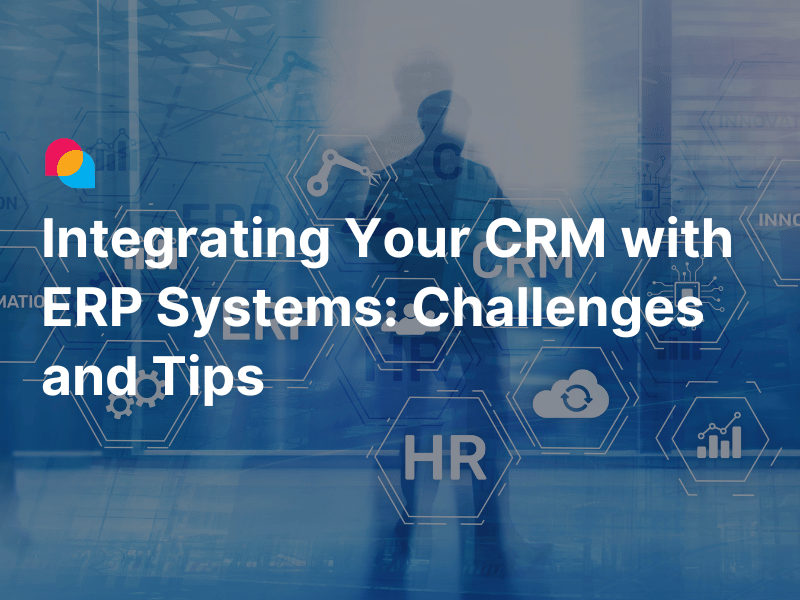For the past few decades, the "move fast and break things" mindset has become the norm in the startup world. Always, you are advised to build the MVP, reduce time to market, and get the market feedback as soon as possible. In the meantime, major companies have set a record for blitzscaling and creating phenomenal success, e.g., Airbnb, Paypal, Google, eBay, Facebook, Linkedin, and Twitter. It makes us tempted to assume faster means better. But in terms of growth, that is not always the case. When fast growth does not accompany scalability, one-night success would probably easily come and easily go. It is where sustainable growth comes into play.
The definition of sustainable growth is clear and easy to understand, but its implementation approach varies with different companies. One critical approach is creating sustainable monetization models that can scale. Yielding steady revenue streams is vitally essential for your long-lasting business. In the digital economy, the emergence of marketplace platforms facilitates either online or offline transactions in different areas of life. Such platforms produce different modern revenue models that augment the traditional ones.
In this article, we will take a look at several typical revenue models that modern marketplace platforms are currently using and how to leverage them to create sustainable growth for your platform.
Popular revenue models for marketplace platform
Commission model
It's the most popular revenue model for marketplace platforms to create a lucrative revenue stream, and for a good reason. The commission fee (a.k.a transaction fee) is charged on each transaction through the platform payment system. It could be either a percentage or a flat fee.
The advantage of this model is that users on the platform don't have to pay anything until the actual transaction happens. Thus, it is a great option to build a relationship with your users, earn their trust, and then collect the first database for your platform. This model also scales nicely. The more transactions generated on the platform, the more revenue you bring in.
On the other hand, the main challenge of this model is determining who to charge, sellers, buyers, or both. One common practice that might ease the decision is: to decide which group is more valuable and harder to reach, and get them first. Then, the other sides are 2-10x easier to bring on board. Often, it is the seller. As they have actual values from acquiring more potential customers on the online platform, they are more willing to pay the fee.
The second challenge is to decide how much to charge. A high fee could be less attractive to your users, but a low one won't cover your expenses. At the same time, when your marketplace has various segments, the commission is likely too high for individual groups but too low for professional ones. In this case, thoroughly examine each user group's insights on your marketplace, and set the appropriate commission for each segment.
In order to facilitate this model, the marketplace has to plan the invoicing process thoroughly in advance and then integrate the invoicing system into their aggregate platform.
In case money is not transacting on your platform, you will need other types of revenue models.
Subscription model
A subscription fee (a.k.a membership fee) is the model in which a user is charged a one-time or recurring fee to enjoy the platform's benefits. Here, platform members can extensively transact on the platform with a very stable expense per month or year.
The subscription model works well when the majority of marketplace members make several transactions per pay period. Such members are almost satisfied with platform values that are balanced with their monthly costs. We often see this model in matching platforms like recruiting sites (LinkedIn, Stackoverflow) or dating sites (OkCupid). The subscription fee is used to guarantee qualified matches.
When the platform values are high enough, it's where you can opt-in with the subscription model. From a marketplace owner perspective, this model is genuinely beneficial to generate predictable and stable recurring revenues, especially when many platform members are too lazy to cancel the subscription plan.
The subscription model requires the marketplace business to really understand what exactly customers are willing to pay for and focus the design of the platform around these expectations. The pricing strategy is also another point to pay attention to. Some standard pricing models are flat pricing, tiered pricing, usage-based pricing, per-user pricing, and per featured pricing.
In order to scale the subscription model, the platform needs to pay attention to retention and constantly improve product positioning. All efforts should focus on providing a positive customer experience that will keep clients coming back. When customer experiences do not rely on your platform only but also on platform sellers, you need to control the quality of services. It's where the managed platform comes into play.
Another challenge that needs to be addressed in this model is chicken-and-egg problems, which will be discussed further in the next post in the marketplace loop.
Read also: How to build an online marketplace platform.
Listing and feature listing model
The listing fee model charges a small fee for new listings on the platform. This model helps you earn money from your entire user base. Thus, the revenue coming from this model is steady.
When the possibility of aggregated traffic is high, the potential listing on the platform is big enough; this listing model will take effect. But it also exposes the challenge for this model. You will need to gather a large customer base, where the sellers have chances to present their products/services in front of thousands to millions of potential customers.
The next challenge of this listing model is that it does not guarantee values for listing users. For example, an item is sold, or a relationship is matched. When you can not control the conversion rate, your fee can not be too high. If the revenue stream from this model can not cover your business expenses, you need to combine this model with another to create a sustainable revenue stream.
In terms of scalability, when the market becomes saturated, your marketplace will hit the ceiling. You can not get many new users as you used to. Here, the revenue stream from the listing model will probably still.
Another kind of listing model is the featured listing model, where the listing of platforms is free. But, to have better visibility, the sellers need to pay an additional fee. On the one side, it lowers the entry barrier of the listing fee model when allowing all listings to be free and just charging for high intent sellers. But it can not resolve the issue of not guaranteeing the conversion rate. So one practice is to try to segment the user base on your platform and allow sellers to choose closely relevant audience segments, which helps raise the conversion rate of being featured listed.
Freemium model
Freemium is a classic monetization model and was almost used as a popular strategy for acquiring the user base in the early days. By adopting this model, the platform grants free access to all users and upgrades them into paid users with several value-adding features, extensions, functions, etc.
First thing first, the bright side of this model is that it will reduce the friction of collecting users and traffic for the platform from the very beginning days. Another point is, that when users are hooked on the core offerings, they are more likely to become loyal users when turning into paid customers.
The challenge here is how to balance the set of features between the freemium version and vs. paid version. The freemium feature set needs to be enough to create a fulfilling experience for customers to resolve a specific pain point. Meanwhile, it should play in charge of nurturing the demand for premium versions. The premium feature set needs to provide enough higher values to bang for the customer's buck.
The next but significant challenge is that you need to prepare a considerable investment of time and money to acquire, retain and convert free users into paying customers.
Lead-based model
The lead-based model sets the principle that when buyers post a request, sellers will pay the bidding fee to contact and quote their potential leads. This model helps to overcome the disadvantage of the listing model in which customers only pay when they are matched with best-fit leads. This model works well with platforms that process high-ticket products or services. To name a few, it could be cars, jewelry for products, and it could be training and one-on-one B2B lead matching for services. Such transaction values are high enough for platform users to jump in and bid.
The lead-based model is beneficial for marketplaces where transactions are made online, but the service is delivered offline. Here, the platform just charges the fee to quote, not on completed jobs or the quality of services delivered by providers. In such a platform, the subscription model will not be a good choice. “When the professionals went on vacation or had a bunch of business from past customers, they wanted to turn us off, but with the subscription, it was always on." Thumbtack founder shared. Overcharging or undercharging is the problem of the subscription model and in order to right-charge the users on these platforms, a lead-based model would help.
However, one major challenge of this model is marketplace leakage. After first-time matching, buyers and providers can work with each other directly without the need for your platform.
How are revenue models applied in real-world marketplaces?
So far, you have had an overview of typical pricing models that modern marketplaces are currently utilizing. In the real world, phenomenal marketplaces operate several business models simultaneously to create their own revenue strategy that fits with their platform. Let's take a look at several following examples. The information here is updated to the date this blog was written.
Amazon Marketplace
- Subscription Model: The Individual plan costs $0.99 per unit sold, and the Professional plan costs $39.99 per month no matter how many units you sell.
- Commission Model: A referral fee is charged for each item sold. The amount depends on the product category. Most referral fees are between 8% and 15%.
- Featured listing Model: Fees for keyword-driven ads and display ads.
- Other revenue streams based on activities: Fulfillment fees, inventory fees, rental book services, high volume listing fees, refund administration fees, etc.

Source: Advertising - Amazon Sponsored Brands
Airbnb
Commission model on both guests and hosts:
- Spit fee: 3% for standard hosts, 20% for Airbnb-experience hosts, and under 14.2% for guests.
- Host-only(*): 14%-16% for hosts.
(*) Host-only means the entire service fee is deducted from the host payout, and guests pay no Airbnb service fee.

Source: Airbnb
Uber
Commission model on drivers: 25% fee on all fares. This fee covers:
- The use of Uber software.
- Collection and transfer of fares.
- Credit card commission.
- Distribution of invoices to clients.

Source: Uber
Paypal
- Commission model:
Net transaction fees are charged to merchants and consumers for each completed transaction. The magnitude of the price is based on the volume of activity, locations, currency conversions, etc.

Source: Paypal consumer fees

Source: Paypal merchant fees
- Others: PayPal also generates revenues through partnerships, referral fees, subscription fees, gateway fees, and services offered to merchants and consumers. The company also earns interest and fees on its portfolio of loan receivables and interest on certain assets underlying customer balances.
Etsy
- Listing model: $0.20 for each item in 4 months. The renewal fee is also $0.20.
- Commission model: 5% per transaction.
- Subscription model: $10 per month for Etsy Plus.
- Others: Advertising and promotion fees, in-person selling fees, payment processing fees, shipping fees, pattern fees.

Source: Etsy
How much is the take rate appropriate for sustainable growth?
When it comes to the marketplace platform, the commission model seems to be the most attractive one. It decreases the friction for buyers to join the platform, and sellers' risks are lower when they only pay as they sell.
The question is, how much is the commission fee (a.k.a. Take rate or rake) appropriate for your sustainable growth?
The question is tricky, and absolutely, there is no one-size-fits-all answer. The variation between rates of marketplaces is enormous. The typical rake is around 20% for the service marketplace and about 10% for the product marketplace. High take rates accompany the exclusivity, e.g., The App Store can charge 30% because it's the single point of access to over one billion iOS devices.
Yet, one thing in common is that sustainable take rates often fall somewhere between maximizing profit and keeping customers within the network. High take rates often introduce more friction for acquiring users and decrease the conversion rate. It also opens the door for new competitors to enter the market. Instead of setting take rates as high as Amazon and eBay, Etsy entered the market with just 50% of what the competitors were charging. With the positioning that Etsy only succeeds if the sellers succeed, this pricing strategy turns out to be brilliantly effective. And now, Etsy is one of the most successful marketplaces in the world. The same situation happened with Booking.com. It first took over the market with low pricing, a 10% rake rather than 30% like its giant competitors - Expedia and Travelocity. Booking.com signed up with nearly every small hotel in Europe at this low rate, which introduced a diversified supply and selection for travelers. Nowadays, Booking.com is still the undisputed leader in the online hotel reservation field.
These case studies have shown that a low take rate is often a reasonable strategy to create sustainable growth for your marketplace. It's safe to first start with a low rate and pivot to find the exact figure for your marketplace where you can make a profit while not luring cost-sensitive users away.
How to prevent marketplace disintermediation (a.k.a. platform leakage)?
While recurring transactions are essential to recurring revenues and sustainable growth, customers on platforms often utilize the marketplace for discovery and move to transact offline to eschew the intermediary fees. One of the main reasons disintermediation happens is when the marketplace fees exceed the perceived value of the service. As a result, we should think about how to raise the values for all user bases to prevent leakage:

Source: Disintermediation in marketplaces and how to fight it - Josh Breinlinger
- Offer tools to the sellers
It could be sellers/provider tools to automate their operation on the platform. UpWork has created a smooth workflow for freelancers to automate all involved tasks from reaching a lead, preparing a proposal, delivering the work, paying taxes, and handling accounting. Top e-commerce marketplaces like Amazon, Etsy, and eBay help sellers process payments online and manage their inventory and delivery. Thumbtack has built invoicing, payment, and scheduling tools for professionals.
The added value could be trust and safety. Airbnb offers insurance that might be up to 1 million USD in liability coverage for the host property damages.
- Reduce the friction for buyers
Enhancing the fast and easy product/service look-up could be a great starting point. Creating a smooth and fewer steps payment process is also important. Engaging high-quality customer support. And create a sense of community.
- Building a business intelligence system
When the underlying data asset is big enough, it's time to apply business intelligence algorithms to provide comprehensive benchmark analytics documents for the whole industry. In this case, it could become a new revenue stream for your marketplace. However, there is a fine line between selling private data and analyzing big data to provide added-value analytics to the market. As a result, you should handle it with care which approaches you will choose.
Final thoughts
Choosing a suitable revenue model from the early days is not an easy task. From my perspective, there is no substitute for gaining knowledge about a market other than starting with one model and pivoting until you find the most appropriate one.
The most lucrative revenue strategy will capitalize both on the number of registered users and activities happening in your marketplace. And the optimal rate is the one that captures both profit and retention. It's safe to start with a low fee to build the traffic and reputation and then move up gradually. And last but not least, it might make sense to combine several revenue models to create a sustainable revenue stream that covers your expenses and facilitates your further sustainable growth.
References
- Juho Makkonen, How to choose the right business model for your marketplace, www.sharetribe.com, Oct 2020.
- Juho Makkonen, Managing platform leakage – How to discourage people from going around your marketplace payment system, www.sharetribe.com, Dec 2020.
- Boris, What’s the right business model for your marketplace?, versionone.vc, May 2015.
- Li Jin, The Marketplace Glossary, a16z.com.
- Josh Breinliger, Disintermediation in marketplaces and how to fight it, acrowdedspace.com.
- The Motley Fool, Why the Take Rate Is So Important in E-Commerce, www.nasdaq.com.
- James Currier, 19 Tactics to Solve the Chicken-or-Egg Problem and Grow Your Marketplace, www.nfx.com.
- Amazon, Amazon Pricing, sell.amazon.com.
- Airbnb, What are Airbnb service fees?, www.airbnb.com.
- Uber, Uber payments and earnings, www.uber.com.
- Paypal, How Paypal makes money, www.investopedia.com
- Etsy, Etsy Fees & Payments Policy, www.etsy.com.





